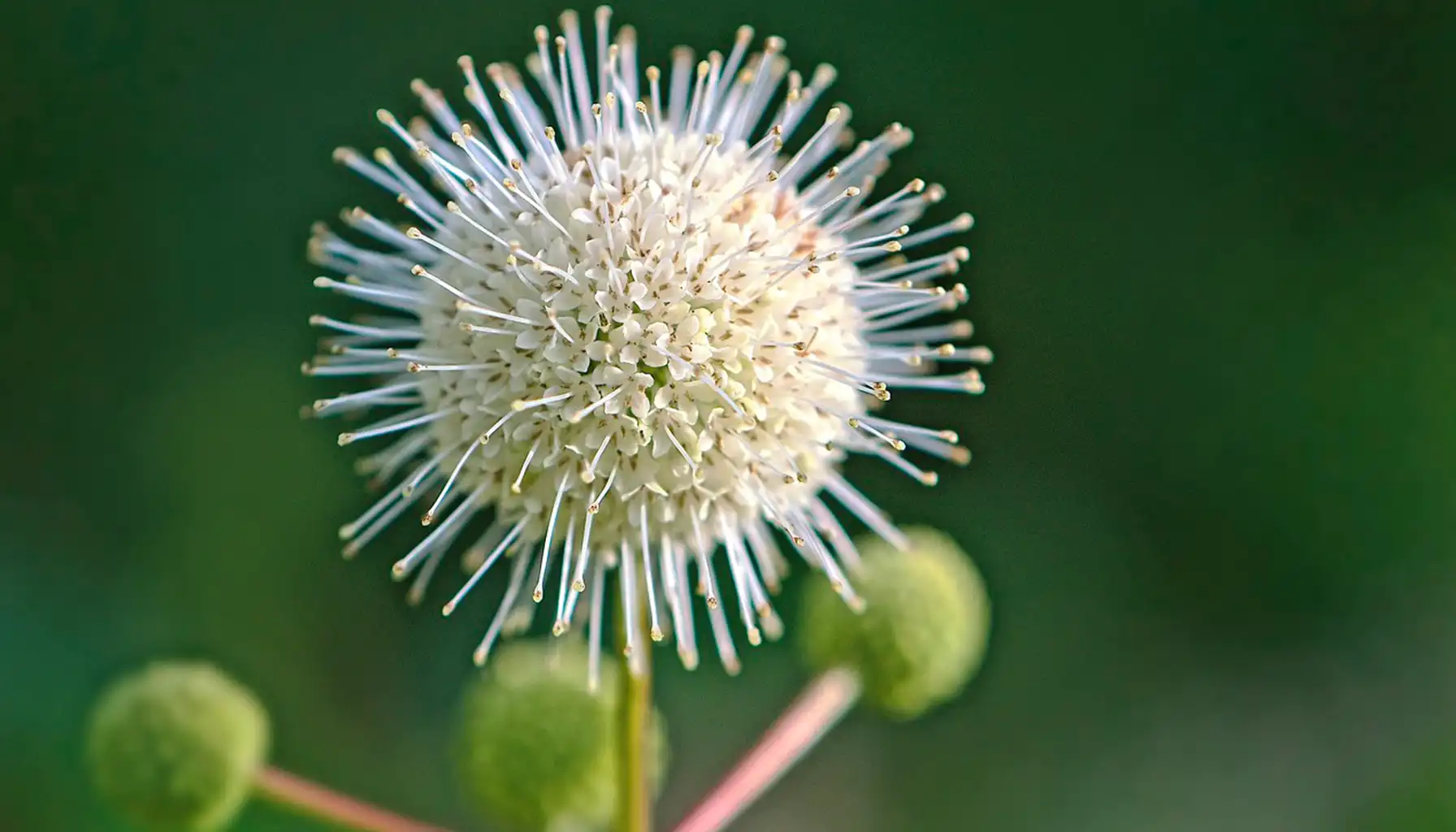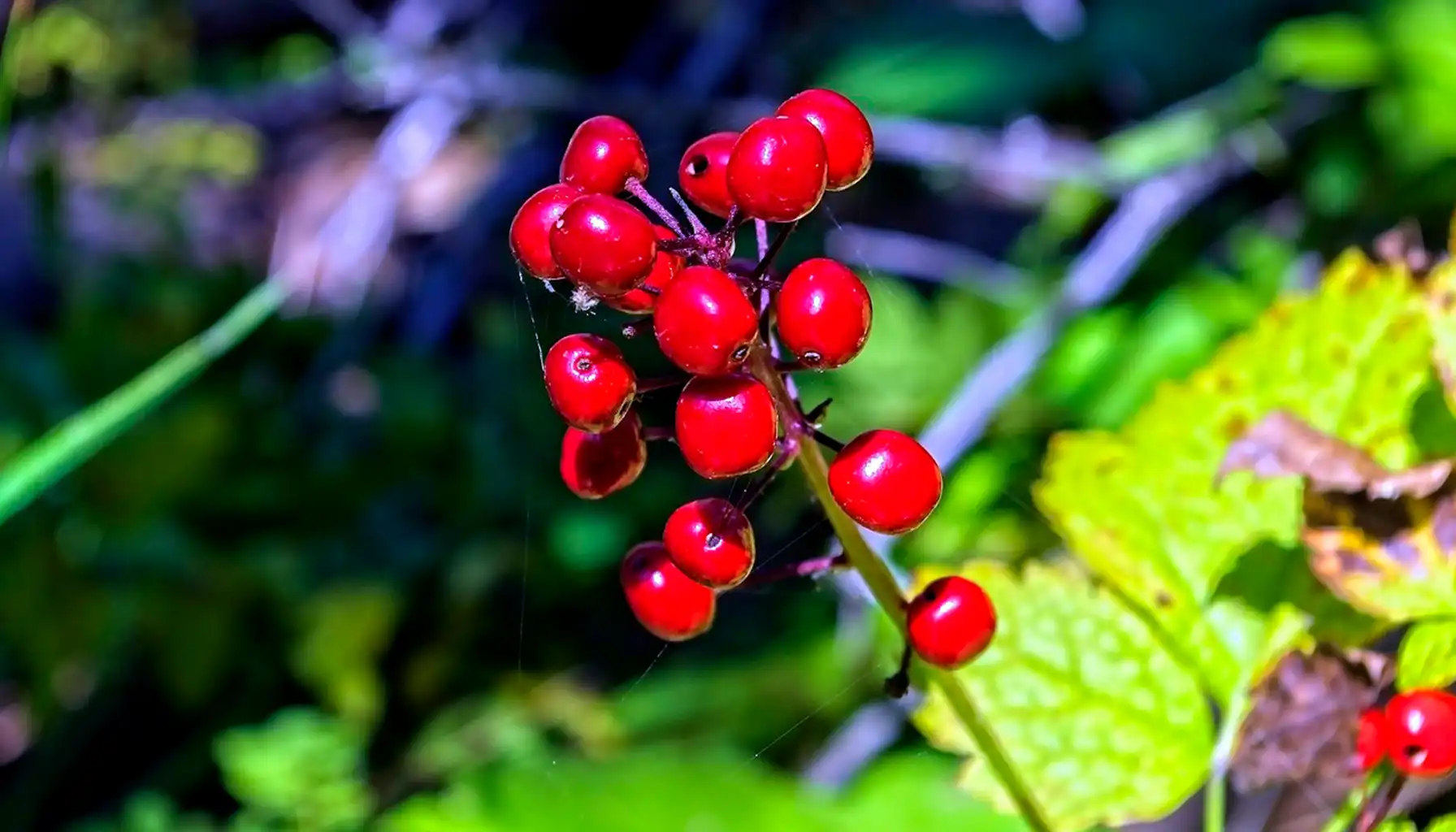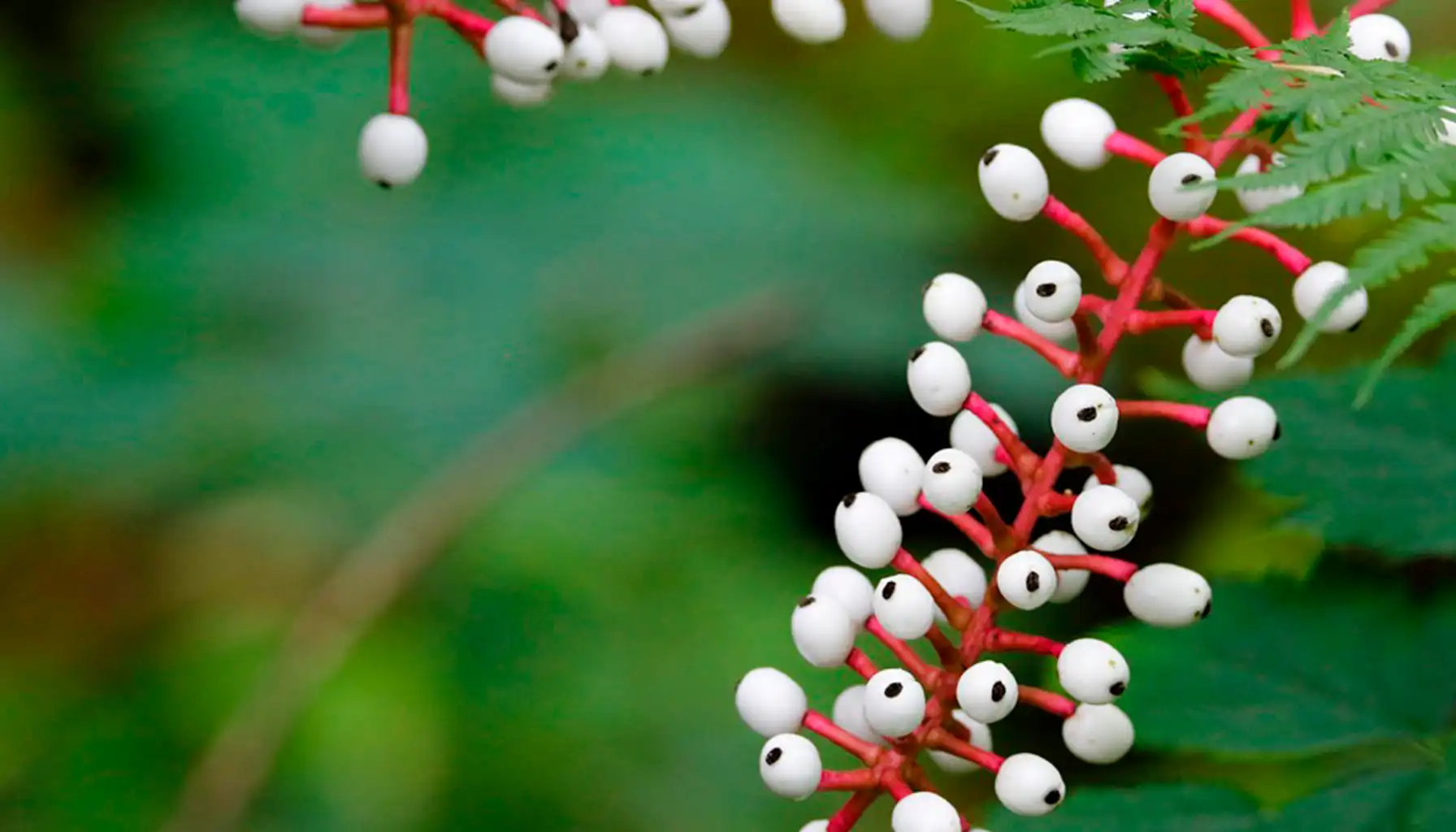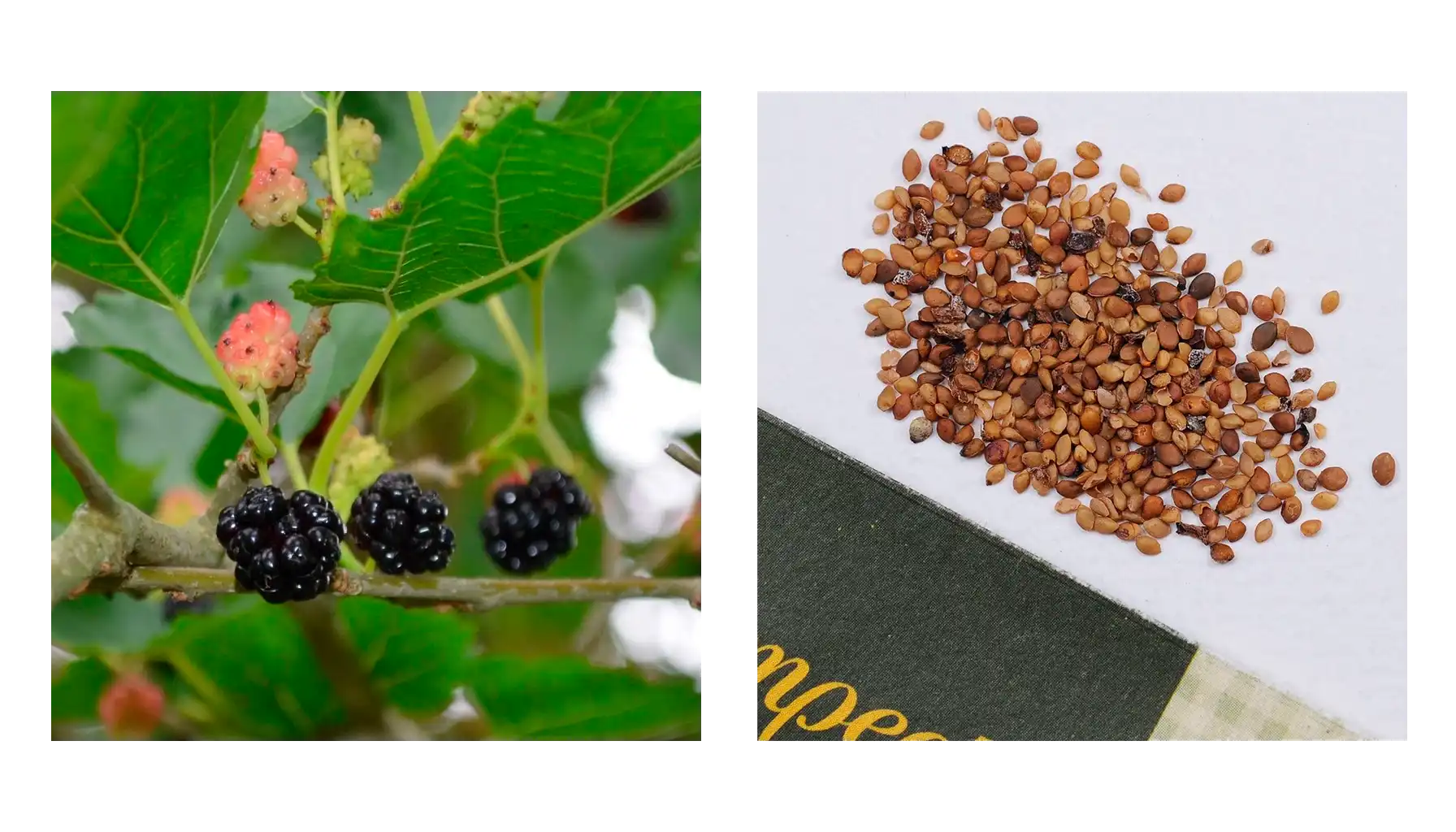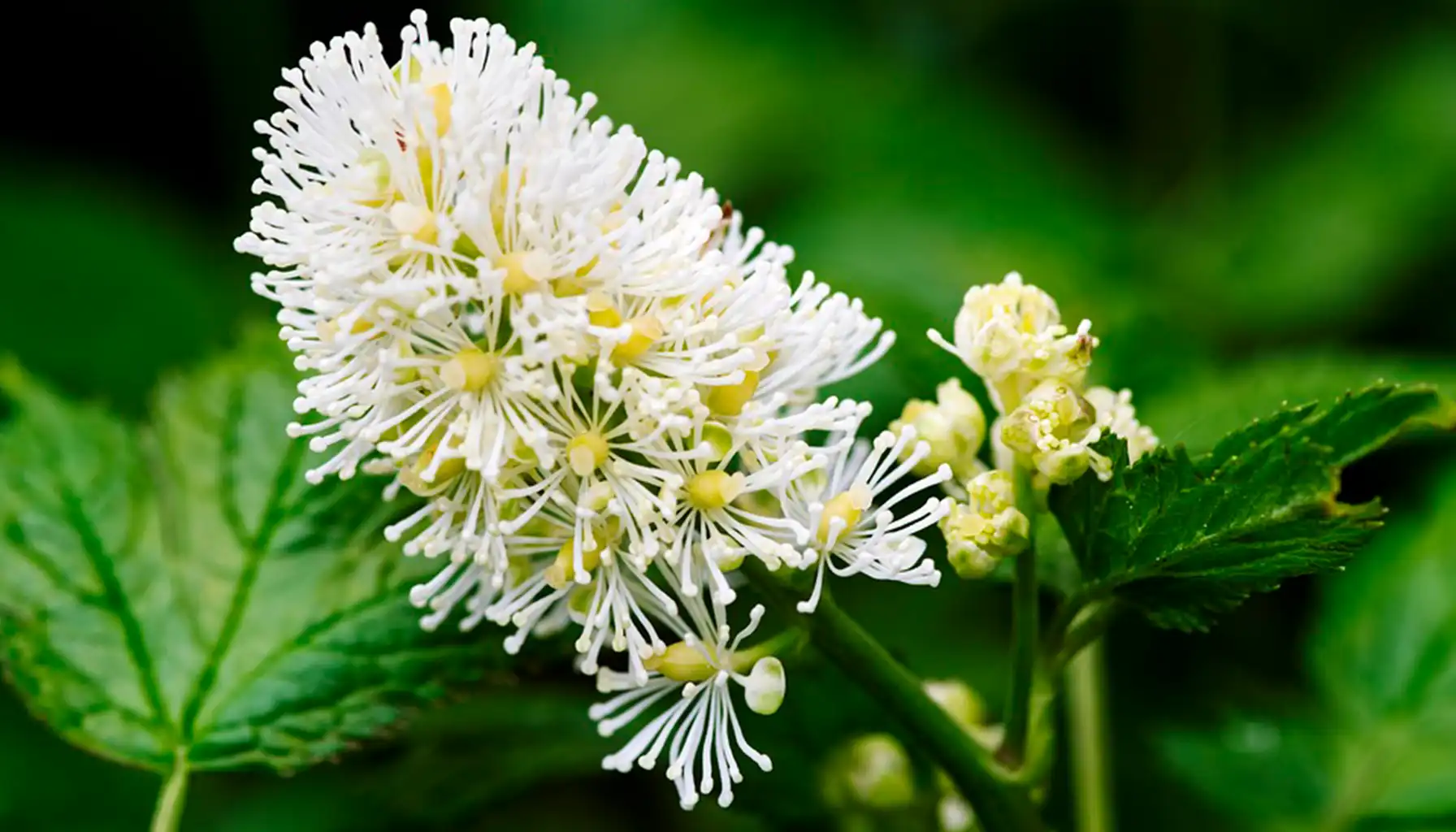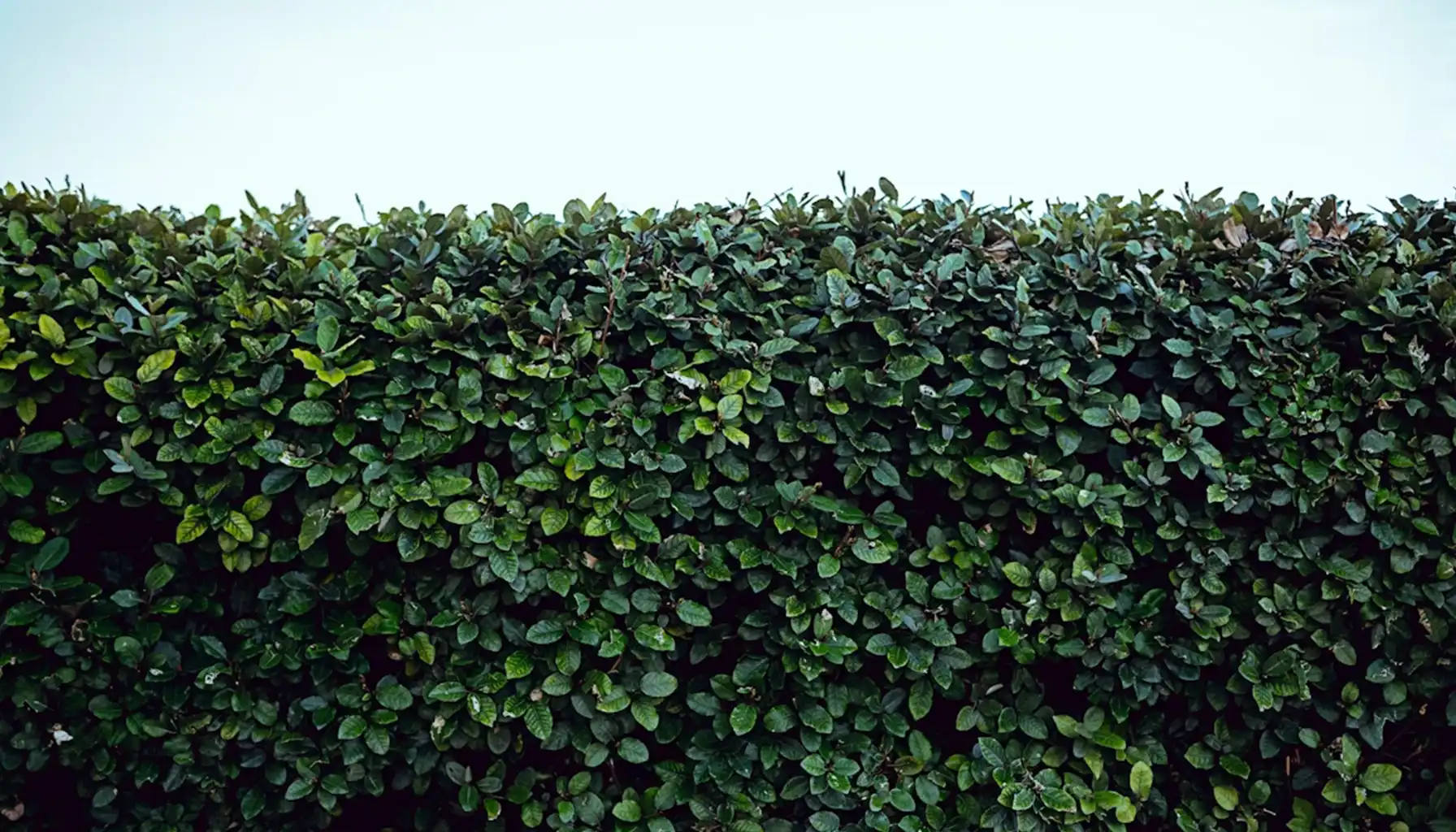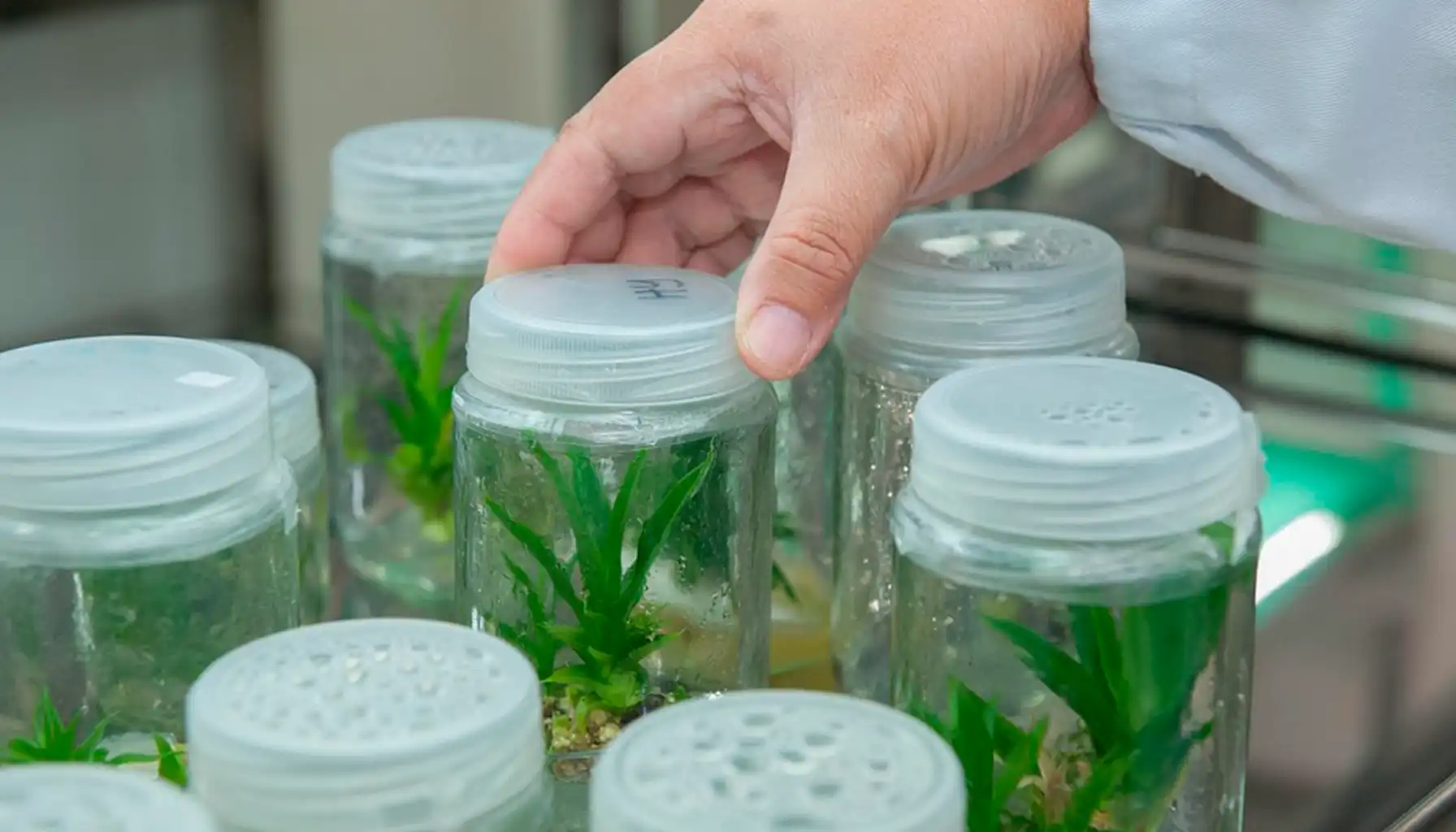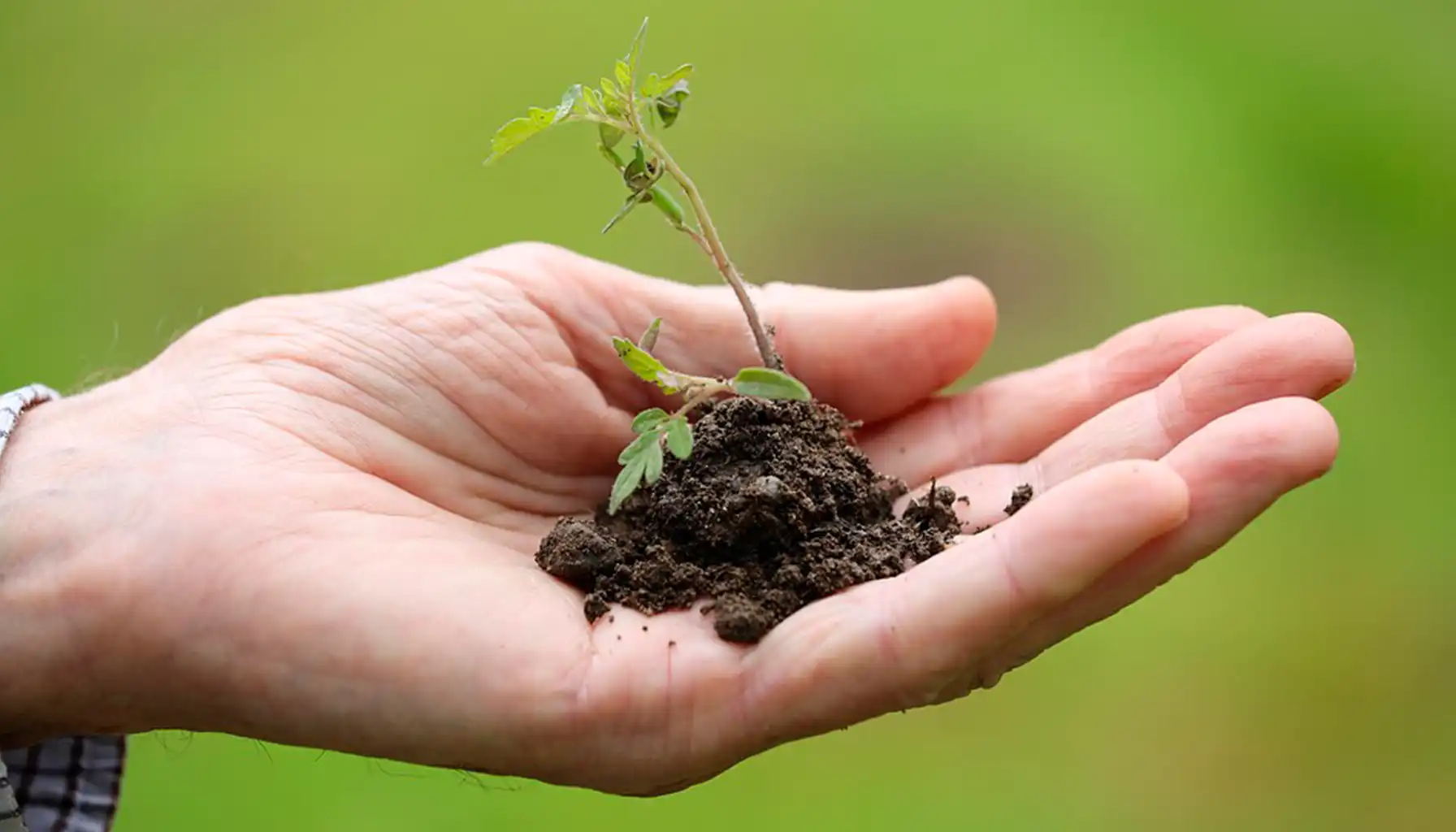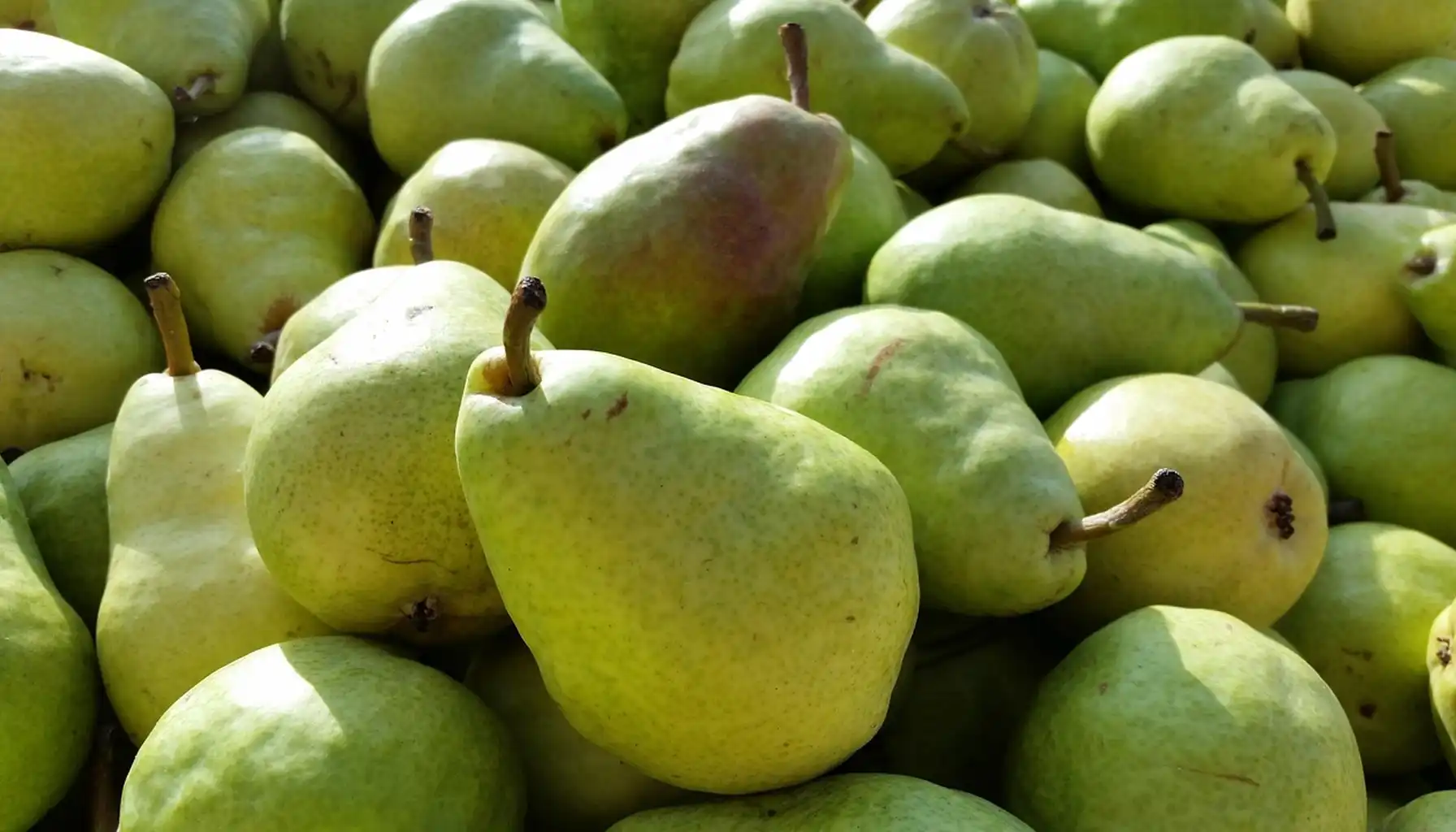Baneberry is the name given to several species of the genus Actaea in the buttercup family. They are immediately noticeable in the forest: white, red, or almost black berries stand out against the foliage.
But behind this striking appearance lies a danger: all parts of the plant are poisonous. That’s why it’s important to tell it apart from harmless forest neighbors and know where it grows, as well as how it looks in different seasons.
And for a quick check, you can use modern tools to help you identify plant.
General Overview of the Baneberry Plant
The plant is a herbaceous perennial that resembles a shrub with serrated leaves and tall flower stalks. The stems emerge from the rhizome in early spring, and by summer, racemose inflorescences appear on them.
Botanical Features of Growth
The plant grows 50–80 cm tall, sometimes reaching a meter.
The leaves are trifoliate, with deep lobes and sharp teeth along the edges.
The inflorescences consist of white flowers with long stamens, giving them a fluffy appearance.
The fruits are shiny and smooth, colored white, red, or almost black depending on the variety.
Similar Species
The baneberry's closest relatives are black cohosh (Cimicifuga racemosa) and monkshood (Aconitum). However, black cohosh produces dry capsules after flowering, while this species' berries remain fleshy. This makes it easy to distinguish the plants in the forest, even from a distance.
Baneberry White and Its Distinct Appearance
The white plant (often called "doll's eyes") is easily recognized by its white berries with a black dot resembling a pupil.
Morphology and Structure of White Baneberry Plant
It usually grows no taller than 70 cm.
Clusters of white blossoms with extended stamens form inflorescences that appear soft and fluffy.
After flowering, the stalks thicken and turn bright red.
The fruits are round, white, with a characteristic black scar.
White Baneberry Life Cycle in Forests
In spring, the plant sends up leaves and stems from the rhizome. Flowering occurs in May and June, and berries form in midsummer. In autumn, the aboveground part gradually dies back, but the rhizome survives until the following season.
Preferred White Baneberry Habitat
Most commonly found in eastern and central North America, it grows in deciduous and mixed forests, forest edges, ravine slopes, and along streams. It prefers fertile, moist, well-drained soil.
Seed Reproduction of White Actaea
Each fruit contains several large seeds. These white baneberry seeds require prolonged stratification, sometimes up to three years, before they germinate. Therefore, propagation by seed is a lengthy process rarely used by gardeners.
White Baneberry Benefits in Landscaping
Toxicity doesn’t lessen its worth as an ornamental plant: the white berries brighten the garden for a long time, and birds use them as food while spreading the seeds.
White Baneberry Poison
All parts of the plant are dangerous, but especially the fruits. Inside them is a toxin from white baneberry that impacts the heart muscle. Even a few berries can cause severe heart rhythm disturbances. Due to the bitterness, poisoning is rare, but it cannot be ruled out.
Poisonous baneberry is also dangerous to pets. Unlike protective crops like briar plant, baneberry cannot be used as a barrier: it is too toxic.
Baneberry Poisoning Symptoms in Humans
Even if poisoning is suspected, seek medical attention.
Red Baneberry – Distribution and Features
The red plant is much more widespread than the white variety, found in many forested regions of North America.
Distinctive Traits of Red Baneberry
It grows up to 60 cm tall.
The inflorescences are more compact than those of the white variety.
The berries are bright red, although white varieties are also available.
Habitats and Growth Preferences
The plant prefers moist ravines, forest streams, and shady slopes. It thrives in fertile loam and high humidity.
Black Baneberry and Its Rare Occurrence
Black is less common than other varieties. Its fruits are almost black, shiny, and ripen by the end of summer.
Distinguishing Features of Black Baneberry
The berries are dark purple or black.
You can come across it in the forests spread across the eastern states.
It can be confused with black cohosh, but has fleshy fruits.
Baneberry Flower – Structure and Pollination
Flowering usually lasts about three weeks in late spring.
Characteristics of the Inflorescence
The flowers are small but numerous.
The inflorescences are racemose, more elongated in the white variety and rounded in the red variety.
The numerous long stamens give them a fluffy appearance.
Pollination and Attracted Insects
Although the flowers do not produce nectar, they do produce pollen, which attracts flies, beetles, and bees. The plant feeds pollinators early on, when other sources are still scarce.
Baneberry Shrub in Woodland Ecosystems
This plant forms dense thickets in shady forests.
Ecological Functions
It provides shelter for small animals.
Birds enjoy the fruits and at the same time become seed carriers, scattering them far beyond the plant.
The root system helps anchor the soil on slopes.
Baneberry Meadows and Their Natural Value
In places with favorable conditions, entire thickets are formed, where bushes grow in groups.
Contribution to Biodiversity
They support the population of pollinating insects.
Birds feed on them as a natural food source.
They give forested areas their own recognizable look.
Baneberry Bush as an Ornamental Plant
The plants are sometimes grown for ornamental purposes.
Ornamental Role in Shady Gardens
Suitable for planting in partial shade and shade.
Pairs well with ferns, asarum, and buckthorn in layered compositions.
Can be used as an accent in woodland flowerbeds.
Influence of Climate on Development
Weather baneberry is sensitive to climate change during the season.
Environmental Reactions
In rainy summers, the bushes produce more luxuriant inflorescences.
In drought, the berries become smaller and fall off quickly.
In winter, the above-ground part of the plant dies off completely, but the roots remain viable.
Propagation and Growth of Baneberry Species
Propagation is possible by dividing rhizomes or by seeds.
Practical Methods of Propagation
Division is done in spring or fall.
Seeds are sown outdoors immediately after harvesting.
Germination takes up to three years.
The plants bloom only in the third or fourth season.
Seasonal Cycles of Baneberry Development
The plant's annual cycle includes four phases:
spring growth of shoots and leaves,e[
summer flowering and fruiting,
fall dieback of the above-ground part,
winter preservation of the rhizome.
If a bush loses its leaves out of season, with wilted shoots and poor growth, then it may be true plant dying, due to disease, nutritional deficiencies, or other problems.
AI Plant Finder for Safer Gardening
AI Plant Finder is an app for plant recognition and care. It identifies plant species from photos, helps diagnose diseases, provides care advice, and has a database of 300,000 plants. It features a virtual botanist, watering and fertilizing reminders, a water calculator, and a light meter. Available free on iOS and Android.
Related AI Plant Finder Posts
